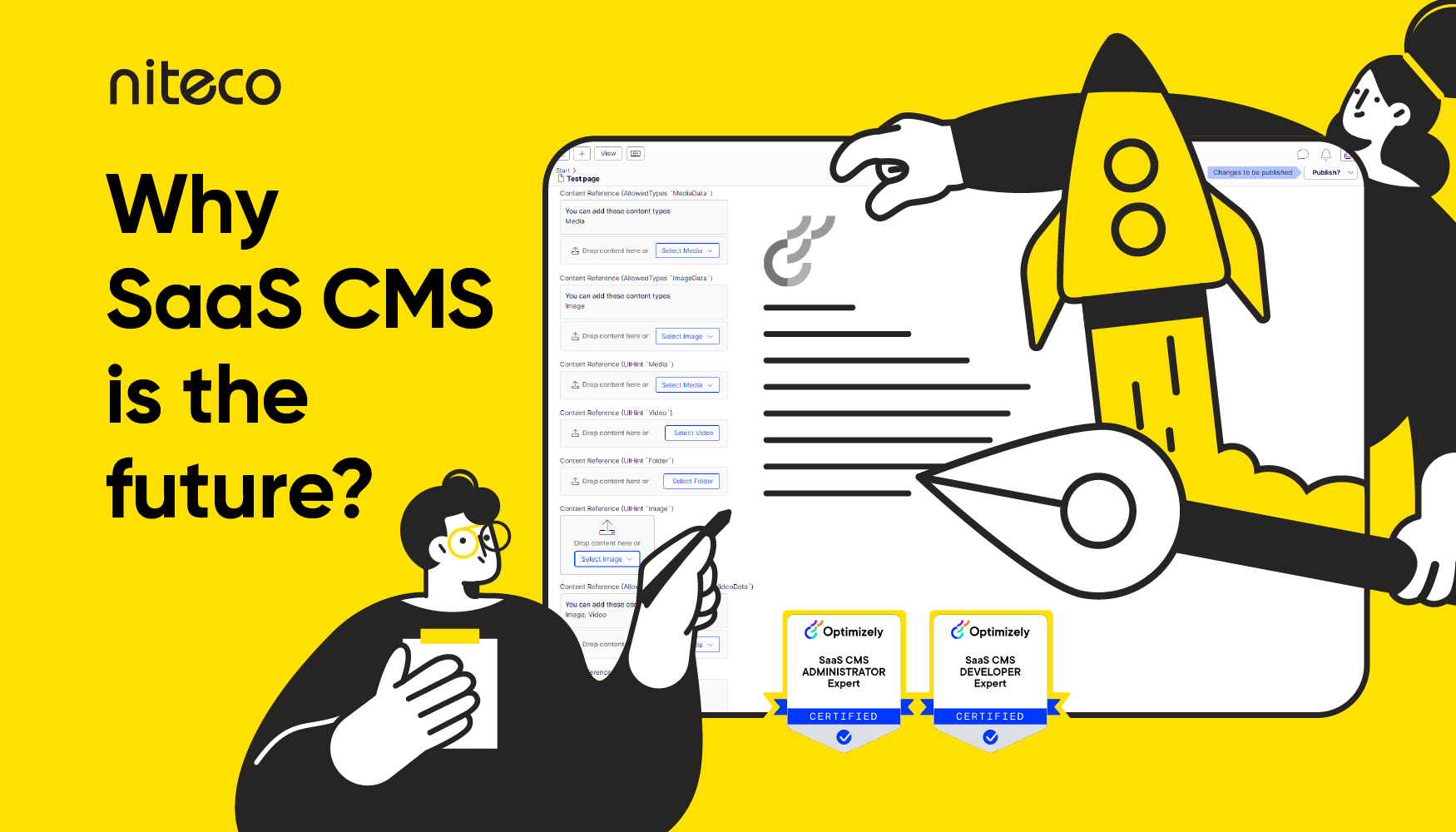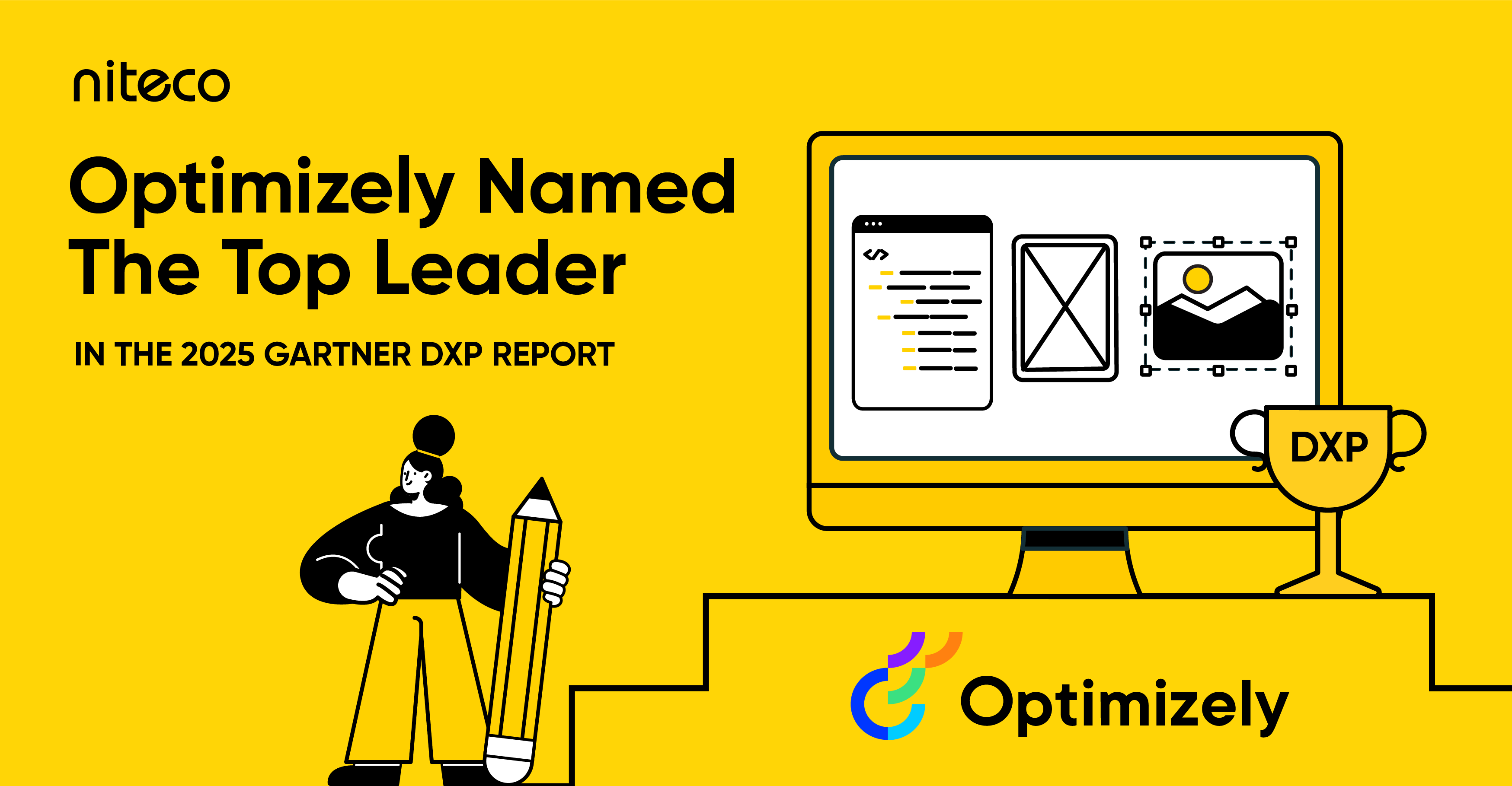Here’s the thing - not everything old is gold. That’s especially true when it comes to technology. New updates, upgrades, and innovations roll out every day, giving your business endless choices. And if you’ve been seeing “SaaS” everywhere, from LinkedIn discussions to skyrocketing hashtag counts, it’s not just hype - it’s a real shift.
It’s time to move beyond just recognizing the term. In this article, we will guide you through not only the SaaS CMS definition, but also why SaaS CMS is a game-changer - to the lives of marketers, developers and the entire digital landscape. Plus, with so many options on the table, we’ll help you figure out why Optimizely SaaS CMS is worth your investment.

What is SaaS Content Management System (CMS)?
You know what a CMS is - it's the digital workspace where marketing teams manage content and launch campaigns while developers build new features to ensure a seamless digital experience for users. But keeping this “workspace” efficient, fast, and hassle-free takes effort. That’s where SaaS CMS comes in.
A SaaS CMS (Software as a Service CMS) is a cloud-based platform where the service provider handles all the technical heavy lifting - hosting, security, updates, and maintenance of the CMS. That means you focus on your content, while they take care of everything else.
Why is SaaS CMS the future of CMS?
The global SaaS market is creating waves in demand, driven by increased digital transformation efforts across various industries worldwide. According to Statista, revenue in the SaaS market worldwide is projected to reach US$390.46bn in 2025. People are seeing the benefits it brings, here are the major benefits your business can make the most out of if you decide to migrate to SaaS CMS:
User-friendly interfaces
Not everyone is a developer, and with a traditional CMS, even simple content updates might require technical knowledge or developer assistance. SaaS CMS removes that barrier. With intuitive interfaces, drag-and-drop editors, and pre-built templates, marketing teams and content creators can manage and publish content without ever touching a single line of code. This means faster execution, reduced dependency on IT, and more control over content workflows.
Faster time-to-market marketing efforts
With a SaaS CMS, marketers can update content in real time - no more waiting on developers. Features like experimentation, content versioning, and automation tools ensure campaigns move as fast as trends do. This means faster execution, better adaptability, and a competitive edge in a rapidly changing digital landscape.
AI-driven optimization with smart integrations
Many SaaS CMS platforms leverage artificial intelligence (AI) to analyze user behavior, automate content recommendations, and optimize customer journeys. Marketers can deliver hyper-personalized experiences at scale, increasing engagement and conversion rates. With AI handling data-driven decisions, marketing teams can focus on creativity and strategy, ensuring content resonates with the right audience at the right time.
Better omnichannel distribution
A SaaS CMS allows marketers to manage content centrally and distribute it across multiple platforms - web, apps, and IoT - without extra effort. This ensures brand consistency, improves audience reach, and saves time juggling different content systems. Whether launching a new campaign or updating messaging, marketers can do it all seamlessly from one place.
Less maintenance, more innovation
No more dealing with server issues, security patches, or software updates - the SaaS CMS provider takes care of it all. Developers can fully focus on building new features, enhancing user experiences, and optimizing performance instead of fixing outdated infrastructure. This shift leads to increased efficiency, reduced workload, and more time spent on impactful projects.
Flexible & API-first architecture
SaaS CMS platforms are typically headless and API-driven, giving developers the freedom to integrate with any tool or system. They can build dynamic, future-proof digital experiences without being locked into a rigid monolithic setup. This flexibility can mean better customization, smoother third-party integrations, and the ability to use the latest technologies effortlessly.
Embracing a SaaS CMS means less maintenance on your end – but you should still consider your technology stack for high performance to make sure the platform’s speed and scalability advantages are fully realized.
Faster deployment & scalability
With a SaaS CMS, platform deployments are quick and scaling is seamless. Whether managing a traffic surge, adding new features, or expanding to new markets, the SaaS infrastructure automatically adjusts. No need for complex reconfigurations - everything just works. This allows developers to meet business demands without worrying about backend limitations.
Comparison between SaaS CMS vs Traditional CMS vs headless CMS
| Feature | SaaS CMS | Traditional CMS | Headless CMS |
| Hosting & Maintenance | Fully managed by the provider, no maintenance required | Self-hosted or PaaS, requires manual updates | Self-hosted, PaaS, or SaaS – depending on provider |
| Scalability | Auto-scalable with cloud optimization | Limited by server resources | Scalable, but requires platform expertise |
| Security & Compliance | Enterprise-level security managed by the provider | Needs constant security updates | Security depends on platform setup |
| Customization & Flexibility | Customizable without hosting complexity | High flexibility but complex | API-first, highly flexible |
| Time to Market | Fastest - ready-to-use features and automation | Slower due to maintenance needs | Faster but requires developer effort |
| Best for | Businesses prioritizing agility, scalability, and low maintenance | Businesses with resources for maintenance | Enterprises with custom development needs |
Note: Many modern CMS solutions can be deployed in different ways. For example, a CMS can be headless while also being offered as PaaS, combining the benefits of both approaches.
Why Optimizely SaaS CMS is a good choice?
Optimizely SaaS CMS balances ease of use with advanced functionality. Here’s why it’s worth considering:
Standout features:
- Visual Builder: A drag-and-drop interface with real-time previews lets marketers create content without coding.
- Optimizely One: Integration with Optimizely One for experimentation, personalization, and analytics.
- Optimizely Graph: Uses GraphQL for efficient content delivery and search across platforms.
- Modern Workflows: Integrations with tools like Vercel and Netlify streamline development.
Why choose Optimizely?
- Hosting Flexibility: Offers both SaaS and PaaS options to fit your specific needs.
- Enterprise-Ready: Robust security, scalability, and user management for organizations of all sizes.
- Proven Track Record: Optimizely has a long history in CMS, with recognition by Gartner and Forrester as a Leader.
- Expert Support: Access to implementation and training expertise ensures you maximize your investment.
Why their SaaS option?
- Low Maintenance: Eliminates infrastructure management so teams can focus on innovation.
- Marketer-Friendly: Tools like Visual Builder reduce developer dependency.
- Future-Proof: Continuous updates and integrations keep it adaptable for new channels and technologies.
SaaS CMS - A Strategic Approach to Content Management
The shift to SaaS CMS represents a strategic approach for many organizations. With quicker time to market, lower maintenance requirements, and greater ease of use, it empowers both marketers and developers to work more efficiently.
Optimizely SaaS CMS offers a compelling combination of user-friendly tools, enterprise capabilities, and technical flexibility that makes it worth considering for organizations looking to future-proof their digital experience.
Now’s the time to make the switch with the world's largest certified Optimizely partner.



